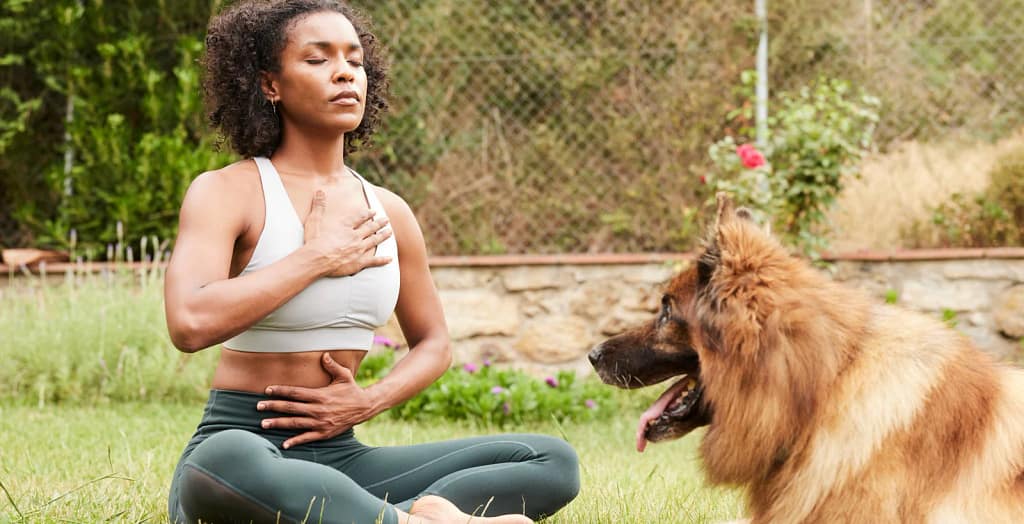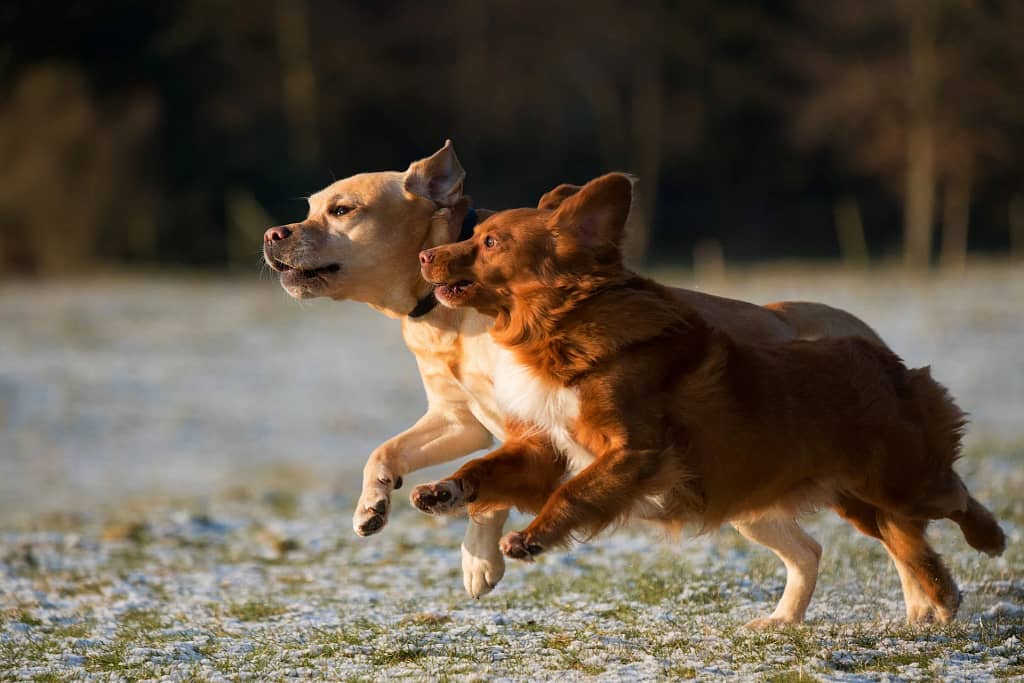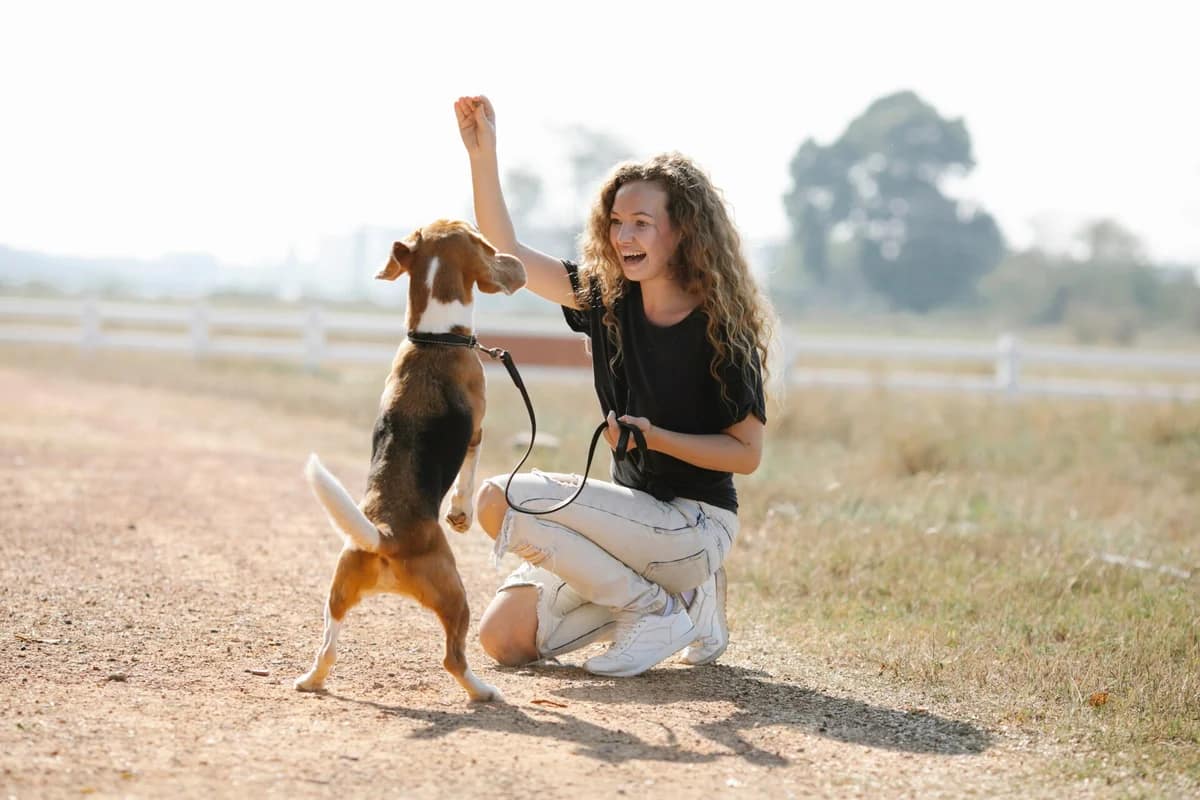Just like humans, dogs can be stressed and anxious. Other stressors for them might include loud noises, new environments, and being left along. Of late, dog breathing exercises have been quite the popular way to make them relax. But does this really work? Can one actually calm a dog by their breathing? This article will explore this new relaxation technique for dogs and see how it might help.
Understanding Dog Anxiety
Dogs are stressed out for numerous reasons. They get scared by firecrackers and thunder. Vet visits can frighten them. Being left alone stresses them out. They might pant excessively. They may tremble, pace, and bark a lot. These are signs of stress. Most pet owners probably would do all possible to ease their dogs since they are already familiarized with the signs of anxiety. It is for this reason that people have started contemplating on the available dog breathing exercises.
What Are Dog Breathing Exercises?
Humans use breathing exercises to calm down. We take deep breaths to lower the stress and relax our bodies. We cannot tell the dogs to take deep breaths like humans do, but with gentle guidance, we can make a dog slow down his breathing.
Whenever a dog is under stress, his breathing turns rapid and shallow. Slowing him down will calm dog with breathing him down. Though not the same as breathing exercises in humans, it does lead the dog into a tranquil state.

How to Practice Breathing Exercises for Dogs
So, how do you start the dog with breathing exercises? Here are some easy steps to get you started:
1.Stay Relaxed : Dogs sense the subtlety in your mood. If you are the calm one, your dog is better off than with a fired-up owner. First, take a few deep breaths to get yourself relaxed.
2. Seek a Quiet Spot: Choose a spot wherein your dog is comfortable. It could be a quiet room or a favourite hang-out place in the house.
3. Touch Your Dog Gently: Stroke your dog lightly. Rest your hand on his chest or side. Speak softly to him.
4. Encourage Slower Breathing: As it exhales, stroke him gently. Softly tell him a word like “relax” or “easy” in a soothing voice. This aids him in learning to associate that word with calmness.
Remember, this is a procedure in which time must be a crucial factor. The more you practice, the more your dog gets used to the pattern. In time, it might turn out to be instinctive through breathing in calming the dog.
Why It Works
Cortisol is a hormone expelled in the dog’s body when under tension, which speeds up the beating of the heart and hastens its breathing. The dog being in a stressed state means that there is this particular hormone in its organism. By slowing it down through breathing, you will be reducing the amount of cortisol in its system. This makes them feel more relaxed and calm.
Although dogs cannot control breathing like humans, their body will react to surroundings. If one can create a calm, peaceful space, they can begin to relax. This is the reason dog relaxation techniques are becoming more popular.

Other Relaxation Techniques for Dogs
Other than breathing exercises, there are more ways to help your dog relax. These can be done on their own or together for the ultimate canine relaxation. Some of these methods include the following:
Massage
A gentle massage can help release tension from your dog’s body. Pay special attention to the neck and back regions, as most dogs hold their tension there.
Relaxing Music
Gentle, soothing music is a great way to create a peaceful atmosphere with your pet. Many dogs are found to positively interact with music built only for pets.
Aromatherapy
There is a specific smell, for example, lavender, which has proved efficient in trying to reduce a dog’s anxiety. Make sure you use only those fragrances that are nontoxic and safe for pets.
Exercises
A light walk or play may allow your dog to get rid of some that pent-up nervous energy. It may be better set when lying and breathing calmly.
Pressure
Many dogs like the application of pressure on their bodies. You could try using a calming vest or merely wrap them warmly in a blanket to provide them with some security sensation.
These can also go down quite well with dog breathing exercises, and you may find it an awesome approach towards keeping your dog calm during stressors.

Benefits of Dog Relaxation Techniques
These methods can have various advantages in your dog’s life.
Less Anxiety
The greatest benefit it can have is a decrease in anxiety. Dogs that practice breathing exercises on a regular basis are generally less anxious during stressful situations.
Better Health
Stress can be capable of being a source of several health issues in your dog, ranging from high blood pressure, indigestion, to an even weaker immune system. A decrease in stress assists in enhancing the health of your dog as a whole.
Stronger Bond
Practicing these exercises together will reinforce your bond with your dog. He will feel safer and trust you more.
Fewer Behavioral Problems
An anxious dog may act out by chewing, barking, or pacing. Dog relaxation techniques can help prevent that.
Better Sleep
A relaxed dog sleeps better. Just like any other animal, dogs also have to sleep well in order to be active, healthy and be able to play.
Can dog benefit from breathing exercises?
Any dog, small or big in size, is going to benefit from the dog breathing exercises. Of course, some are more nervous or anxious and might find them even more helpful. Others might just need these at certain times of their lives, in which they may feel particularly vulnerable, such as during thunderstorms or going to the vet.
Keep in mind that all dogs are different, and some may respond much quicker than others when it comes to these dog relaxation techniques. Be patient with your dog and try other methods that best work for him.
Final Thoughts on Breathing Exercises for Dogs
Dog breathing exercises are new ways to help your furry friend relax. While a dog does not have the capability of regulating his or her breathing as humans can, dogs do respond to a calm environment. You will be able to reduce your dog’s stress by guiding them into slower breathing.
Combine this with several other dog relaxation techniques, and you have one very effective way of keeping your dog happy and relaxed. The likes of fireworks, trips to the vets, and traveling for instance, become infinitely easier with techniques like these. With practice, the dog will find that situations that used to be very stressful are not as intimidating anymore.
Consequently, it is very important to help your dog feel calm and thus maintain a healthy and happy dog. Why not give dog breathing exercises a try then? With patience and practice, one may find a simple way to calm a dog with breathing effectively.
